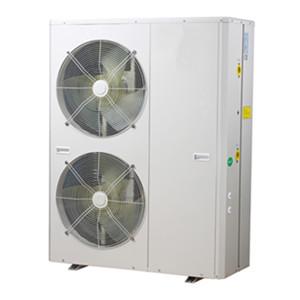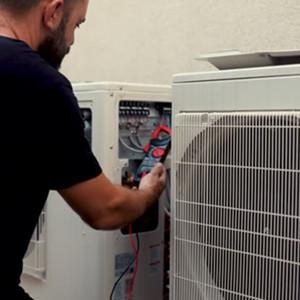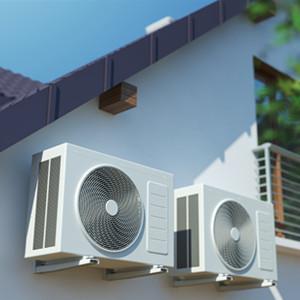Heat pump working principle
A heat pump is a device that transfers the heat energy of a low-temperature heat source to a high-temperature heat source, through which cooling and heating are realized. The low-temperature heat sources usually used in heat pump installations are the media around us-air, river water, seawater, urban sewage, surface water, groundwater, reclaimed water, fire-fighting pools, or working fluids discharged from industrial production equipment. These working fluids It often has a temperature close to that of the surrounding medium.Working principle of air source heat pump:
During operation, the evaporator absorbs heat from the ambient heat energy in the air to evaporate the heat transfer working fluid. The working fluid vapor is compressed by the compressor and the pressure and temperature increase. The high temperature vapor condenses when passing through the special annular tube bonded to the outer surface of the water storage tank. The condenser condenses into liquid and transfers the heat to the water in the air source heat pump storage tank.
Compared with the heating system of boiler (electricity, fuel) and air source heat pump, water source heat pump has obvious advantages. Boiler heating can only convert 90% to 98% of electric energy or 70% to 90% of fuel internal energy into heat for users to use. Therefore, ground source heat pumps can save more than two-thirds of the electric energy than electric boiler heating. The fuel boiler saves more than half of the energy; because the heat source temperature of the water source heat pump is relatively stable throughout the year, generally 10~25℃, its cooling and heating coefficient can reach 3.5~4.4, compared with the traditional air source heat pump, It is about 40% higher, and its operating cost is 50% to 60% of that of ordinary central air-conditioning.
Working principle of ground source heat pump:
Ground source heat pump is a kind of high-efficiency energy-saving air-conditioning equipment that utilizes shallow geothermal resources (also called ground energy, including groundwater, soil or surface water, etc.) that can provide heat and refrigeration. The ground source heat pump realizes the transfer from low-temperature heat energy to high-temperature heat energy by inputting a small amount of high-grade energy (such as electric energy). Ground energy is used as a heat source for heat pump heating in winter and a cold source for cooling in summer. That is, in winter, the heat in ground energy is taken out, and the temperature is raised to provide indoor heating; in summer, indoor heat is taken out and released to Earth can go in. Generally, a ground source heat pump consumes 1kWh of energy, and users can get more than 4kWh of heat or cooling.
Working principle of water source heat pump:
By inputting a small amount of high-grade energy to realize the transfer of heat energy from low temperature to high temperature, the water body is used as the heat source of heat pump heating in winter and the cold source of air conditioning in summer. In the summer, the heat in the building is "taken out" and released into the water body. Because the water source temperature is low, the heat can be taken away efficiently to achieve the purpose of cooling the building indoors in the summer. In winter, the water source heat pump unit "extracts" heat energy from the water source and sends it to the building for heating.
Leomon Technology is a professional heat pump manufacturer in China. If you have purchase or other needs for the heat pump. Please contact us. We will give you the most satisfactory answer.






